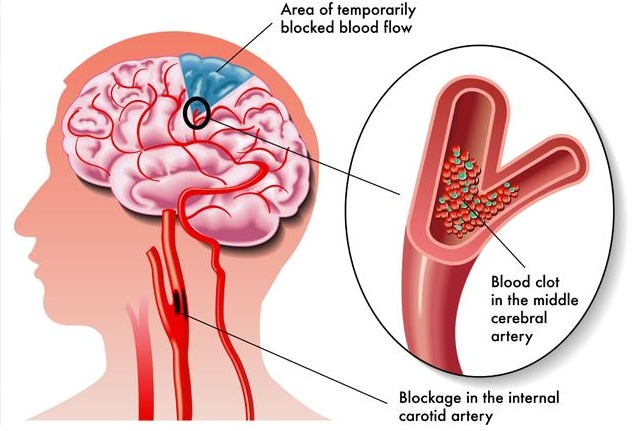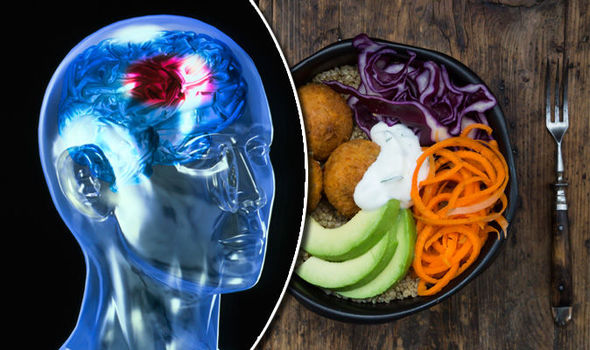Preventing and Reversing Stroke with a Whole Food Plant-Based Diet
/Last week we looked at the #2 Killer of Americans—Cancer. This week we will look at another deadly killer—Stroke.
According to the National Center for Health Statistics, Stroke was the fifth highest cause of death in America in 2016, with 142,142 deaths. [1] Globally, it contributed to an estimated 6 million deaths in 2016. According to the World Stroke Organization, about 1 in 6 people worldwide will have a stroke in their lifetimes. [2] Additionally, stroke claims a life about once every 5 seconds. [3]
How some types of stroke occur
The World Stroke Organization then explains, “Stroke is a condition where the blood supply to the brain is disrupted, resulting in oxygen starvation, brain damage and loss of function. It is most frequently caused by a clot in an artery supplying blood to the brain, a situation known as ischemia. It can also be caused by hemorrhage when a burst vessel causes blood to leak into the brain.”
The organization then continues, “One of the main disease processes leading to stroke is atherosclerosis. There are many other risk factors, including tobacco use, physical inactivity, unhealthy diet, harmful use of alcohol, and hypertension” [2]
Just as a reminder, the Mayo Clinic defines atherosclerosis as “the buildup of fats, cholesterol and other substances in and on artery walls (plaque), which can restrict blood flow.” [4] We already looked at reversing atherosclerosis with a plant-based diet in the blog A WFPB Diet Prevents and Reverses the #1 Killer of Americans—Heart Disease. So this already takes care of one of the major risk factors.
A peer-reviewed article published in the journal Clinical Nutrition aimed at clarifying whether high dietary fiber intake has an impact on incidence and risk of stroke at a population level. They found that “The belief that dietary fiber intake (DFI) is inversely associated with some diseases was postulated 40 years ago, and then enormously fueled and kept alive by a great body of science since. Today, it is therefore generally believed that eating lots of fiber helps prevent obesity, diabetes, and cardiovascular diseases such as stroke.” [5]
Dietary fiber can only be found in plants and plant products, none in animal foods, so eating more plants is the best way to increase fiber intake. A paper published in the journal Stroke found that an increase of 7 grams/day of total dietary fiber was associated with a 7% reduction in stroke risk. [6] Increasing fiber intake by 7 grams is pretty simple. It is about equivalent to the fiber in a portion of whole-meal pasta (70g), a piece of fruit (apple/pear/orange) and a serving of tomatoes each day. [6].
Another important risk for strokes is arterial stiffness. Strokes are one of the many complications of arterial stiffness. Another study published in the American Journal of Clinical Nutrition followed 600 children from age 13 in junior high until age 36. The researchers found that “Lower lifetime intake of fiber during the course of young age is associated with carotid artery stiffness in adulthood. Promoting consumption of fiber-rich foods among the young may offer a means to prevent accelerated arterial stiffening in adulthood and related cardiovascular sequelae.” [7]
Click on the Image to Enlarge
This means that even in children around age 13 they could see differences in arterial stiffness depending on diet. This is crucially important for teens and youth like us! The study also found that “relatively small increases in fiber intake throughout the course of life—equivalent to the daily consumption of ∼1 apple or banana or half a portion of broccoli or muesli—might translate to physiologically relevant differences in arterial stiffness in adulthood.” [7]
Note for youth on a Standard American Diet or those consuming animal foods. If you go WFPB now, you are not doing anything too cautious, you are simply reversing the stroke risk and heart disease you already have!
Additionally, the highest incidence of stroke was detected in subjects intaking ≤ 25 g/day soluble and ≤ 47 g/day insoluble fiber. This indicates that one should try to get at least 25 grams of soluble fiber per day and 47 grams of insoluble fiber per day. Soluble fiber can be found in legumes, oats, nuts, and berries. Insoluble fiber can be found primarily in whole grains. [5]
I think it would be helpful for me to include some resources where you can learn more about stroke and even how to prevent and reverse it. The first is a video is titled How To Prevent a Stroke and is a part of Dr. Michael Greger’s How Not to Die series. Another resource is his video library about stroke where you can find many videos about a plant-based diet and stroke.
A simple conclusion arises from all this scientific information. The amount of food a person eats every day is pretty fixed. So to increase dietary fiber, which is only found in plants and not animals, means to replace animal foods with whole plant foods for all of us teens and youth. This is the number one advice by the World Health Organization for a healthy diet. [9]
I found it astonishing that strokes can be reserved by simply following a whole food plant-based diet. Tens of thousands of people die each day from strokes, and most of them can be prevented by following a healthy diet!
Sources:
[1] https://www.cdc.gov/nchs/fastats/leading-causes-of-death.htm
[3] Calculations: Seconds in one year: 60*60*24*365 = 31,536,000
Deaths from Stroke each year: 6,000,000
⇒31,536,000/6,000,000≈5.3
[5] https://www.ncbi.nlm.nih.gov/pubmed/23317525
[7] https://academic.oup.com/ajcn/article/96/1/14/4571419
[8] https://nutritionfacts.org/video/how-to-prevent-a-stroke/
[9] http://www.euro.who.int/en/health-topics/disease-prevention/nutrition/a-healthy-lifestyle


